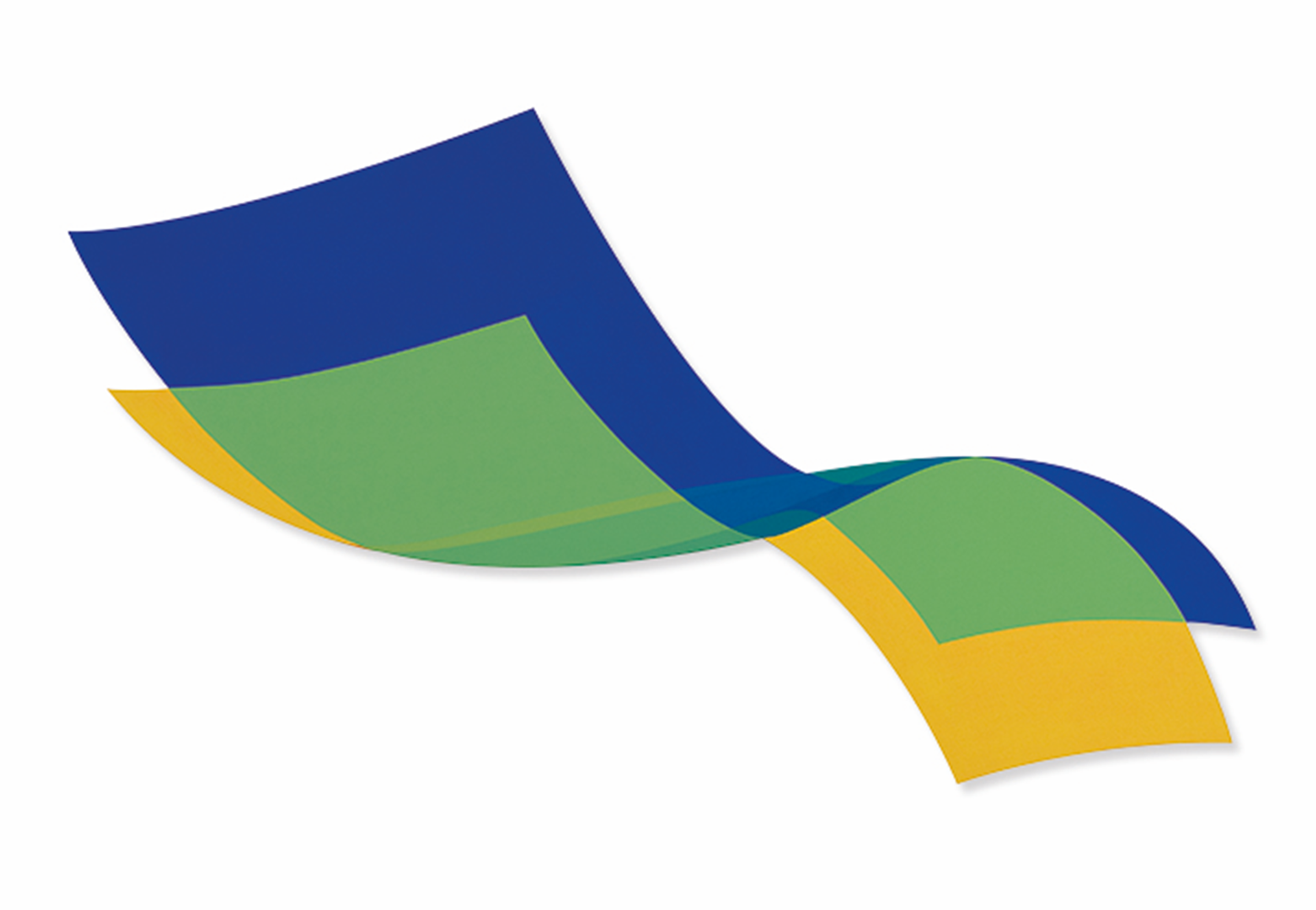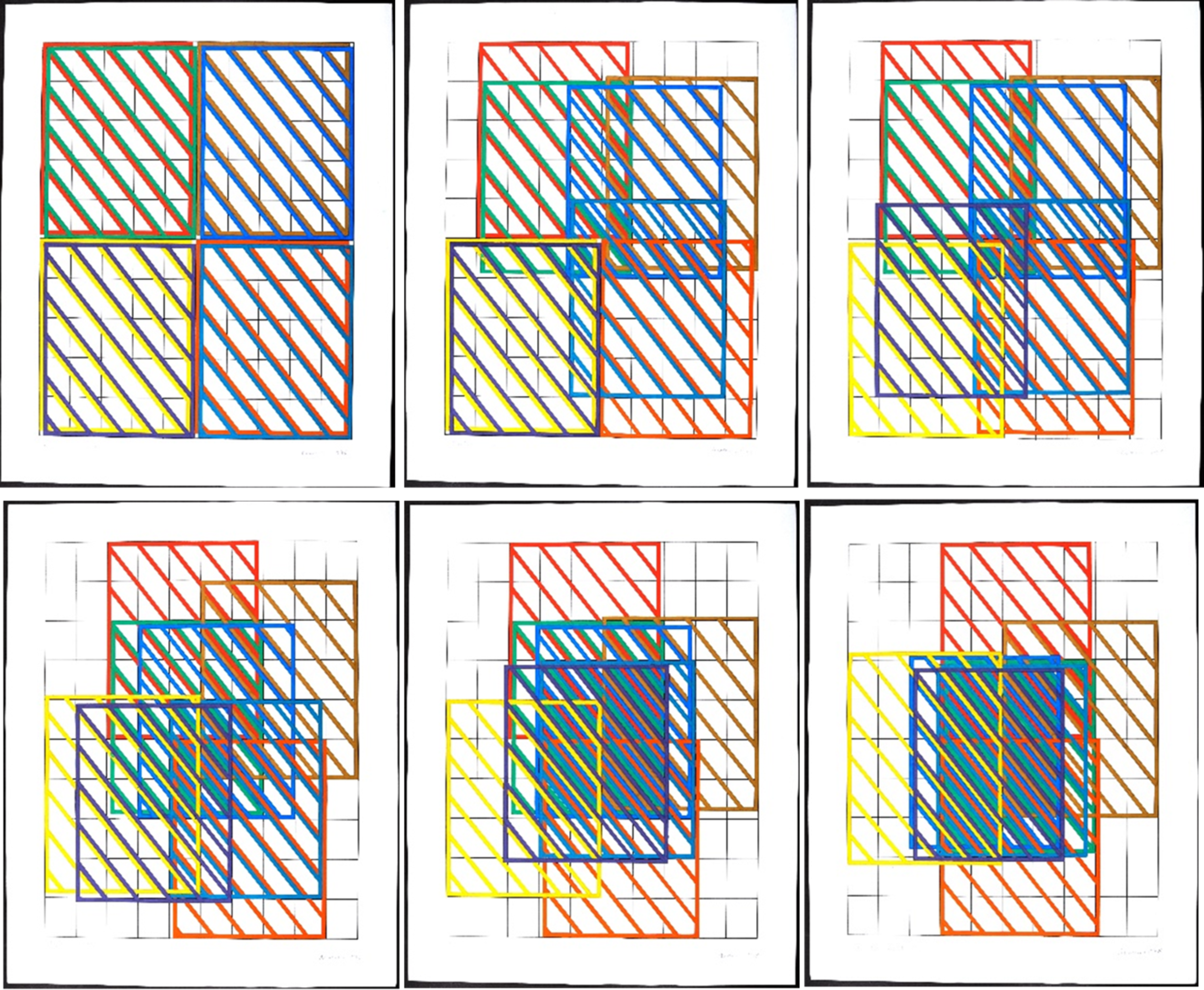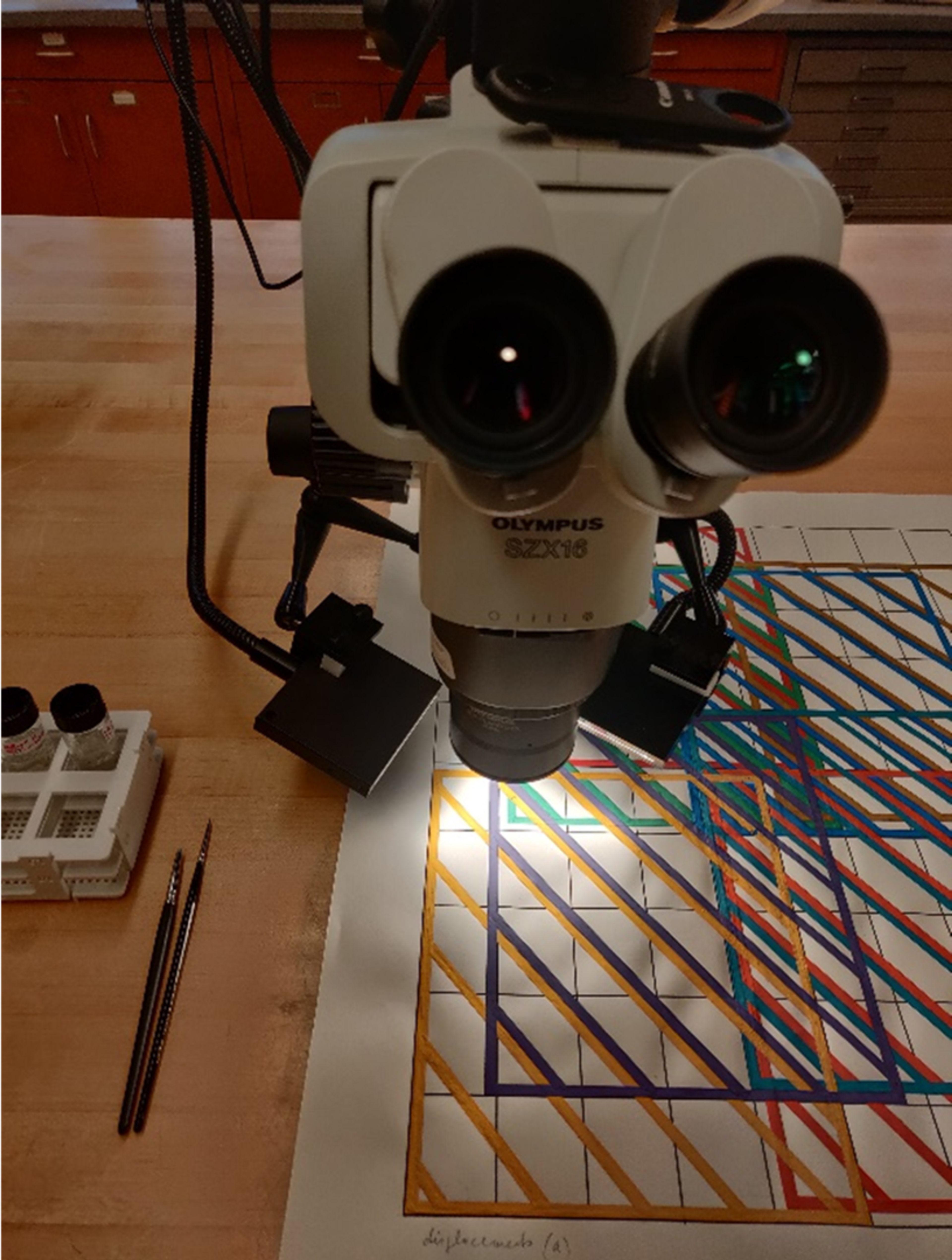In 2019, The Met acquired a series called "displacements (a)" consisting of six paintings on paper made by the Hungarian artist Dóra Maurer. Her career spans over fifty years, with works in almost every medium: photography, video, performance, sculpture, and painting. Dóra Maurer was born in Budapest in 1937 and studied at the Academy of Fine Arts in the department of painting and printed graphics from 1955–1961 during the Hungarian revolution. Due to her marriage to the Austro-Hungarian artist Tibor Gayor, she could travel between Budapest and Vienna. Since she was able to work from within Hungary as well as from outside, she uniquely experienced the "East" and the "West" of the iron curtain, which is reflected in her work.
Overall, her life's work can best be described as the visualization of moving elements. Her entire oeuvre seems connected and can be interpreted as a configuration of different groups of works, media, and colors that complement, merge and interweave with each other (fig. 1).

Figure 1. Dóra Maurer (Hungarian, b. 1937). Overlappings 38, 2007. Acrylic on canvas and wood, 91 x 240 cm, (MD439) © Dóra Maurer
The extensive Displacements series (fig. 2) started in the 1970s and significantly changed Maurer's work. It is based on a mathematical system to visualize motion and change. On top of a 10 x 10 grid, she painted 5 x 5 rectangular color fields while consistently using the same eight colors: red, orange, yellow, green, blue, brown, purple, and turquoise. In the series, the colored rectangles were then shifted and, in some areas, overlapped to create dimension. In the evolution of that idea, the same-colored fields were put onto different shapes to achieve an even more three-dimensional effect (fig. 3).

Figure 2: Dóra Maurer (Hungarian, b. 1937). Displacements (System Drawing), 1972. Ink on paper, 70 x 50 cm, (MD146) TATE, Presented by anonymous donors 2018, (T15450) © Dóra Maurer

Figure 3: Dóra Maurer (Hungarian, b. 1937). Space Painting, 1984–96. Silver print, gouache, 100 x 70 cm, (MD199-III4-96) © Dóra Maurer
The Met's acquired series from Dóra Maurer was produced in 1976 from the more extensive Displacements series. The six pieces show eight rectangular shapes, crossed by diagonal lines, with each shape in a different color on top of a black grid. They are titled "displacements (a)" in the bottom right corner of the sheet, with numbers 1–6 on the back.

Figure 5: Dóra Maurer (Hungarian, b. 1937). Displacements 1-6, 1976. Gouache on paper, six sheets, Each: 24 x 19 3/4 in. (61 x 50.2 cm), The Metropolitan Museum of Art, New York, Purchase, Bequest of Gioconda King, by exchange, 2019 (2019.155a–f) © Dóra Maurer
Starting on the first sheet, a pair of rectangles with contrasting colors are placed in each corner. Cold colors like blue, green, purple, and turquoise are placed in the front, and warmer colors like red, orange, yellow, and brown are placed in the back. In the subsequent five sheets, the rectangles follow a rhythmic movement where the cold-colored rectangles move diagonally and the warm-colored ones in horizontal and vertical directions throughout the grid. The series consists of six paintings of gouache on paper. Gouache is a matte, water-based, gum-bound media consisting of opaque pigments, commonly bulked with chalk and other white fillers, resulting in a flat and evenly opaque surface. In Maurer's series, different colors overlap, creating areas with multiple layers of paint, causing flaking and tenting of the media. In addition, the paper's susceptibility to changes in dimension leads to a loss of adhesion between the paint layer and the paper support (fig. 6). By consolidating the media, conservators stabilize areas of vulnerabilities in the media on the paper.

Figure 6: Photomicrographs (70X) craquelure from shrinkage on left and flaking, tenting, and losses of the media in areas with thick application of paint (2019.155d)
Consolidants are prepared with numerous and complex criteria in mind: strength or concentration of the solution, ability to secure the paint layer without changing the color, saturation, and surface sheen, along with ease of application. The media is usually consolidated while working under magnification with the assistance of a binocular microscope. However, many application techniques and tools are available: brush, ultrasonic mist, airbrush, syringe, and a suction plate or table. Each work of art is assessed for optimal working procedures and choice of consolidant.

Figure 7: A stereo binocular microscope is essential for precise brush-application of the consolidant applied with a sure and steady hand.
